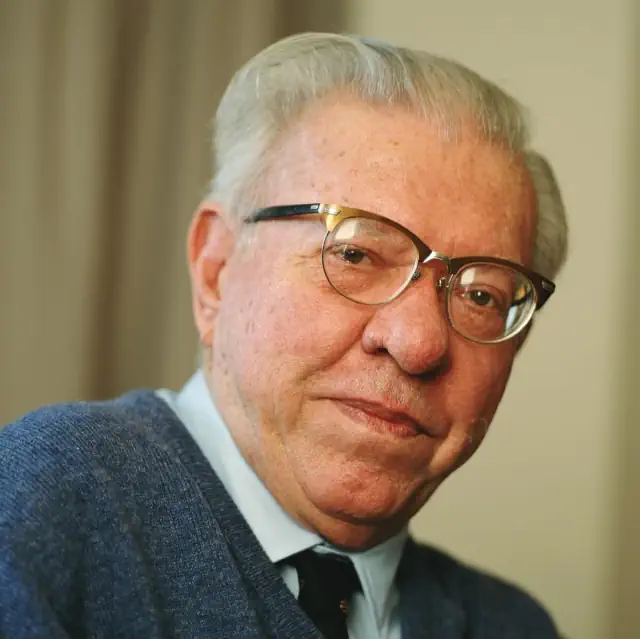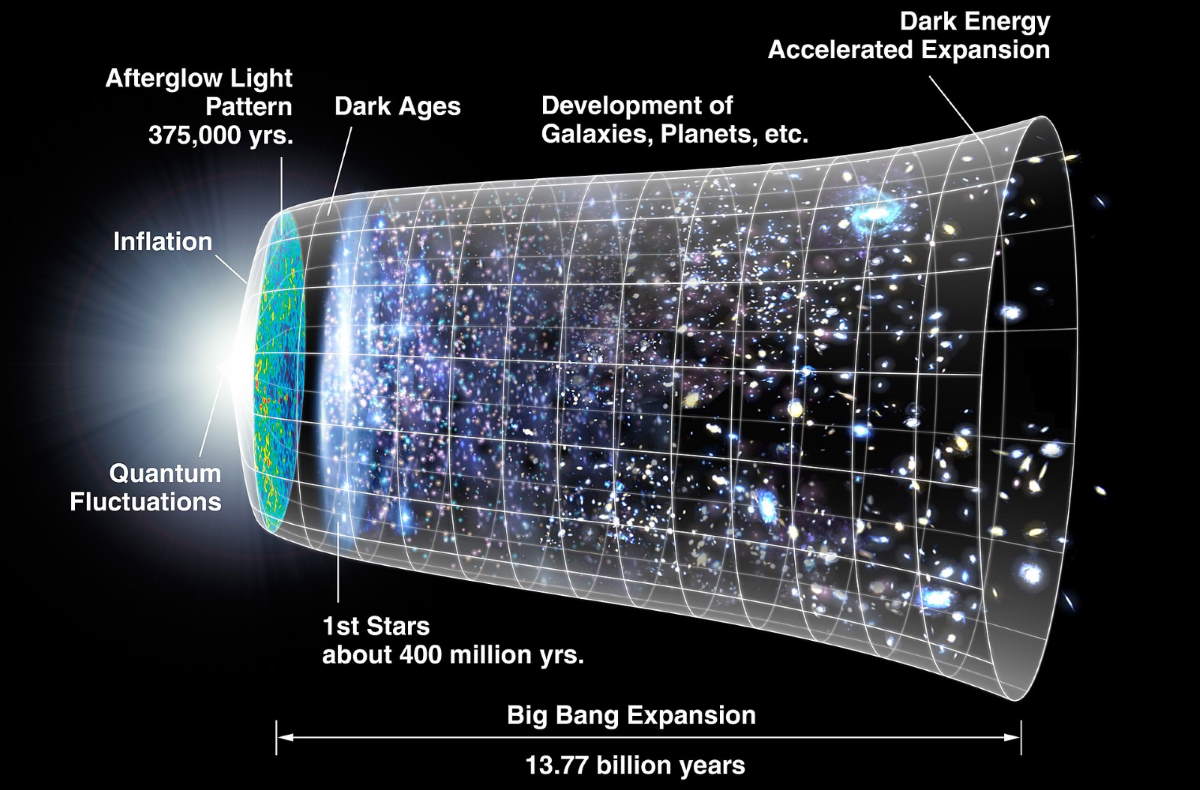On March 28, 1949, the English astronomer Sir Fred Hoyle (24 June 1915 – 20 August 2001) unintentionally coined the term “Big Bang”. In fact, Hoyle was thinking the idea that the universe had a beginning to be pseudoscience and he was arguing the universe as being in a “steady-state”.
Today’s (March 28) story of what happened this day in Science, Technology, Astronomy, and Space Exploration history.
Fred Hoyle unintentionally coins the term “Big Bang”
On March 28, 1949, in a scripted radio broadcast on the BBC Third Programme which was later printed in The Listener (see notes 1), on 7 April 7, 1949, Hoyle explained his own thoughts in a “steady state” universe, saying, “earlier theories… were based on the hypothesis that all the matter in the universe was created in one big bang at a particular time in the remote past.”
Hoyle repeated his use of the term big bang in a 1950 broadcast published also in The Listener on March 9, 1950: “One [idea] was that the Universe started its life a finite time ago in a single huge explosion… This big bang idea seemed to me to be unsatisfactory.”
While his critics, especially the Russian-born American polymath, theoretical physicist, and cosmologist George Gamow (March 4, 1904 – August 19, 1968) found the “big bang” term pejorative, Hoyle has said his intention was to make a vivid description for the radio audience. The term “Big Bang” stuck.

What Is the Big Bang?
The big bang is how astronomers explain the way the universe began. It is the idea that the universe began as just a single point, then expanded and stretched to grow as large as it is right now, and it is still stretching.
In 1927, the Belgian Catholic priest, theoretical physicist, mathematician, astronomer, and professor of physic Georges Lemaître (17 July 1894 – 20 June 1966) had a big idea. He said that a very long time ago, the universe started as just a single point. He said the universe stretched and expanded to get as big as it is now, and that it could keep on stretching.
Just two years later, in 1929, the American astronomer Edwin Hubble (November 20, 1889 – September 28, 1953) noticed that other galaxies were moving away from us. Furthermore, the farthest galaxies were moving faster than the ones close to us.
This meant that the universe was still expanding, just like Lemaître thought. If things were moving apart, it meant that long ago, everything had been close together – everything we can see in our universe today: stars, planets, comets, asteroids.
A tiny and very hot beginning
When the universe began with a big bang, it was just hot, tiny particles mixed with light and energy. The visible universe was only a few millimeters across. It was nothing like what we see now. As everything expanded and took up more space, it cooled down.
The tiny particles grouped together. They formed atoms. Then those atoms are grouped together. Over lots of time, atoms came together to form stars and galaxies.
The first stars created bigger atoms and groups of atoms (all the atoms around us, including the ones in our bodies, have witnessed the most violent explosions in the universe). That led to more stars being born. At the same time, galaxies were crashing and grouping together. As new stars were being born and dying, then things like asteroids, comets, planets, and black holes formed.
The evolution of the Universe after the Big Bang
The NASA image below is a representation of the evolution of the universe over 13.77 billion years. The far left depicts the earliest moment we can now probe after the Big Bang when a period of “inflation” produced a burst of exponential growth in the universe. (Size is depicted by the vertical extent of the grid in this graphic.)
For the next several billion years, the expansion of the universe gradually slowed down as the matter in the universe pulled on itself via gravity. More recently, the expansion has begun to speed up again as the repulsive effects of dark energy have come to dominate the expansion of the universe.
The afterglow light (the Cosmic Microwave Background) seen by Wilkinson Microwave Anisotropy Probe (WMAP, see notes 2) was emitted about 375,000 years after inflation and has traversed the universe largely unimpeded since then. The conditions of earlier times are imprinted on this light; it also forms a backlight for later developments of the universe.

Arguments supporting the Big Bang model
The Big Bang Model is supported by a number of important observations:
- The expansion of the universe (the observation that galaxies are receding from us)
- The abundance of the light elements H (hydrogen), He (helium), Li (Lithium). These elements were fused from protons and neutrons in the first few minutes after the Big Bang.
- The cosmic microwave background (CMB) radiation. The early universe was very hot. The CMB radiation
is the remnant heat leftover from the Big Bang. - The age of the universe as estimated from the Hubble expansion and the CMB is now in good agreement with other estimates using the ages of the oldest stars.
- Primordial gas clouds. Since the primordial gas clouds detected in 2011 have no detectable levels of heavy elements, they likely formed in the first few minutes after the Big Bang.
- Detailed observations of the morphology and distribution of galaxies and quasars are in agreement with the current state of the Big Bang theory.
Notes
- The Listener a weekly magazine established by the BBC in January 1929 which ceased publication in 1991.
- The Wilkinson Microwave Anisotropy Probe (WMAP) is a NASA Explorer mission that launched June 2001 to make fundamental measurements of cosmology — the study of the properties of our universe as a whole. WMAP has been stunningly successful in producing our new Standard Model of Cosmology.
Sources
- Fred Hoyle on Wikipedia
- March 28 on the Today in Science History website
- What Is the Big Bang? on the NASA Space Place website
- Big Bang on Wikipedia
- What is the Big Bang Theory? on Space.com
- Fred Hoyle on Wikipedia
- Moon Landings: All-Time List [1966-2025] - February 2, 2025
- What Is Max-Q and Why Is It Important During Rocket Launches? - January 16, 2025
- Top 10 Tallest Rockets Ever Launched [2025 Update] - January 16, 2025

